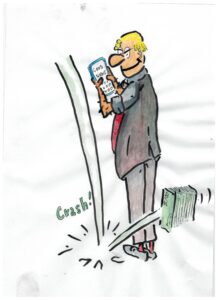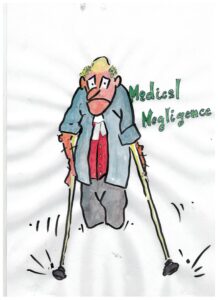Interpretation of insurance exclusion clauses
- 2019-09-14
- By Dr Will Higgs PhD, Barrister
- Posted in Contract Law, Contractual Interpretation, Exclusion Clauses, featured, Insurance
The applicable principles are as follows:
There was also no issue about the principles which govern the resolution of what lies in issue as to the proper construction of the endorsement to this insurance policy.
Where an insurance company prepares the document, it is bound to make its meaning as clear as possible: Craine v Colonial Mutual Fire Insurance Co Ltd (1920) 28 CLR 305; [1920] HCA 64. “A policy of insurance, even one required by statute, is a commercial contract and should be given a businesslike interpretation. Interpreting a commercial document requires attention to the language used by the parties, the commercial circumstances which the document addresses, and the objects which it is intended to secure”: McCann v Switzerland Insurance Australia Ltd (2000) 203 CLR 579; [2000] HCA 65 at [22].
The meaning of commercial documents must be determined objectively, their construction being determined by what a reasonable person in the position of the parties would have understood them to mean, which requires consideration both of the text of the documents and also the surrounding circumstances: Pacific Carriers Ltd v BNP Paribas (2004) 218 CLR 451; [2004] HCA 35 at [22].
If there is ambiguity, resort can also be had to the surrounding circumstances known to the parties: Codelfa Construction Pty Limited v State Rail Authority of NSW (1982) 149 CLR 337 at 352; [1982] HCA 24.
The interpretation of an exclusion clause “is to be determined by construing the clause according to its natural and ordinary meaning, read in the light of the contract as a whole, thereby giving due weight to the context in which the clause appears including the nature and object of the contract, and, where appropriate, construing the clause contra proferentem in case of ambiguity.”: Darlington Futures Ltd v Delco Australia Pty Ltd (1986) 161 CLR 500 at 510 [1986] HCA 82.
Where two meanings are open, “it is proper to adopt that meaning that will avoid consequences that appear irrational and unjust”: Public Transport Commission of New South Wales v J Murray-More (NSW) Pty Ltd (1975) 132 CLR 336 at 350; [1975] HCA 28. Further, in the event of ambiguity it is proper to give a construction “that would avoid irrational consequences that it is unlikely that the parties intended”: Distillers Co Bio-chemicals (Australia) Pty Ltd v Ajax Insurance Co Ltd (1974) 130 CLR 1 at 11; [1974] HCA 3.
A court may also depart from the “strictly literal meaning of a particular expression to place upon it an alternative construction which is more reasonable and more in accord with the probable intention of the parties if the words will bear that construction.”: Australian Casualty Co Ltd v Federico (1986) 160 CLR 513 at 520; [1986] HCA 32.
The contra proferentem rule is one of last resort, however, applying only when ambiguity remains after all other avenues of construction have been exhausted: Beefeater Sales International Pty Ltd v MIS Funding No 1 Pty Ltd [2016] NSWCA 217.
From
SEARCH BLOG POSTS
LATEST BLOG POSTS
- Updated product safety mandatory reporting guidance for suppliers now available
- Pleading fraud – cause and effect is essential
- Does the Trustee’s right of indemnity have priority over the right of beneficiaries in relation to assets?
- Rules of war (in a nutshell) | The Laws Of War
- MH370 Final Report
Past Blog Posts
- December 2021
- September 2021
- August 2021
- May 2021
- April 2021
- March 2021
- August 2020
- February 2020
- September 2019
- February 2019
- December 2018
- July 2018
- April 2018
- December 2017
- May 2017
- February 2017
- December 2016
- November 2016
- October 2016
- September 2016
- August 2016
- April 2016
- March 2016
- October 2015
- September 2015
- August 2015
- May 2014
- April 2014
- March 2014
- January 2014
Categories
- Appeals
- Artificial Intelligence
- Aviation law
- Banking and Finance Law
- Blogs
- Civil Liability Act
- Class Actions
- Coding for lawyers
- common law
- Consumer Claims (TPA)
- Contract Law
- Contractual Interpretation
- Criminal law
- Deeds
- Docassemble
- duty of care
- Engineering Law
- Equity
- Evidence
- Exclusion Clauses
- Execution of documents
- Expert Witness
- featured
- Financial Services
- Fraud
- Fundraising (Chapter 6D)
- General comment
- Home Building Law
- Insurance
- Legal drafting
- Local Court
- Medical Negligence
- MH370
- Motor Accidents
- Negligence
- Occupiers negligence
- Other
- Personal Injury
- Personal Property Securities (PPSA)
- Pleading
- Practice & Procedure
- Products Liability
- Property
- Real Property
- Reasons for a decision
- Securitisation
- Security (Mortgages & Charges)
- Sentencing
- Swaps & Derivatives
- Teaching
- Transactional Law
- Transfer of financial assets in transactions
- Trusts & Trustee Law
- Uncategorized
- War and Weaponry
- Witnesses
SEARCH BLOG POSTS
LATEST BLOG POSTS
- Updated product safety mandatory reporting guidance for suppliers now available
- Pleading fraud – cause and effect is essential
- Does the Trustee’s right of indemnity have priority over the right of beneficiaries in relation to assets?
- Rules of war (in a nutshell) | The Laws Of War
- MH370 Final Report
Past Blog Posts
- December 2021
- September 2021
- August 2021
- May 2021
- April 2021
- March 2021
- August 2020
- February 2020
- September 2019
- February 2019
- December 2018
- July 2018
- April 2018
- December 2017
- May 2017
- February 2017
- December 2016
- November 2016
- October 2016
- September 2016
- August 2016
- April 2016
- March 2016
- October 2015
- September 2015
- August 2015
- May 2014
- April 2014
- March 2014
- January 2014
Categories
- Appeals
- Artificial Intelligence
- Aviation law
- Banking and Finance Law
- Blogs
- Civil Liability Act
- Class Actions
- Coding for lawyers
- common law
- Consumer Claims (TPA)
- Contract Law
- Contractual Interpretation
- Criminal law
- Deeds
- Docassemble
- duty of care
- Engineering Law
- Equity
- Evidence
- Exclusion Clauses
- Execution of documents
- Expert Witness
- featured
- Financial Services
- Fraud
- Fundraising (Chapter 6D)
- General comment
- Home Building Law
- Insurance
- Legal drafting
- Local Court
- Medical Negligence
- MH370
- Motor Accidents
- Negligence
- Occupiers negligence
- Other
- Personal Injury
- Personal Property Securities (PPSA)
- Pleading
- Practice & Procedure
- Products Liability
- Property
- Real Property
- Reasons for a decision
- Securitisation
- Security (Mortgages & Charges)
- Sentencing
- Swaps & Derivatives
- Teaching
- Transactional Law
- Transfer of financial assets in transactions
- Trusts & Trustee Law
- Uncategorized
- War and Weaponry
- Witnesses




